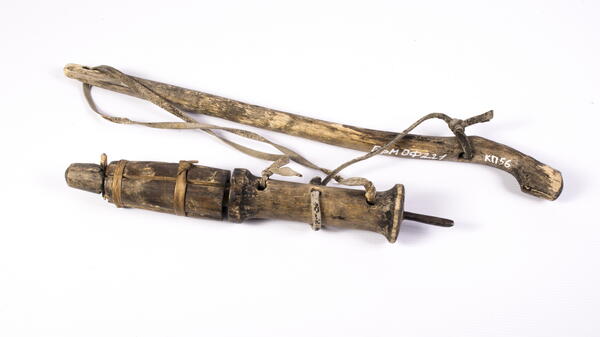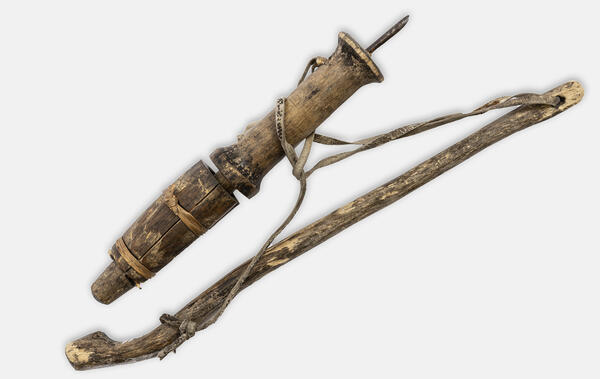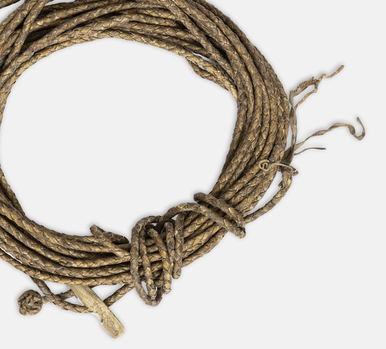The indigenous peoples of the North traditionally made all household items by hand. Each craftsman used a personal set of tools for working with wood, leather, and metal. It included an ax, several types of knives, a bow drill, a saw, a plane, and an awl.
The bow drill is indispensable in the manufacturing of many traditional products, such as fishing gear, vehicles, and household buildings. In particular, it is used for drilling holes in sled runners, wooden parts of harnesses, as well as in bone and sheet iron workpieces. There are drills of various lengths, shapes, and diameters for different types of work.
The tool consists of a round handle with a movable spool at the top, a metal tip, a leather strap, and a wooden bow. The spool is made of spruce, birch, or alder, and the shaft is made of larch. The metal tip is lathed by hand. It used to be made from steel pitchfork teeth, but now ready-made purchased parts are used.
The handle features three holes for threading leather straps. The ends of the straps are connected to the bow. The bow is a straight wooden stick with a thickened end. Both ends of the bow are threaded with rovduga (reindeer suede) straps.
Using a bow drill is quite simple. The drill is held by the spool with the left hand, while the bow is moved back and forth with the right hand. The movement of straps makes the drill rotate. Despite the primitive design, the traditional bow drill has all the main characteristics of a modern drilling machine. The main difference is that working with a bow drill takes more time.
Nowadays, the small-numbered peoples of the North
can buy industrially manufactured tools and no longer need to make them
manually. However, the bow drill in its original form remains one of the basic
tools in the traditional life of the peoples of the North because it is light
and does not require any external power source.




